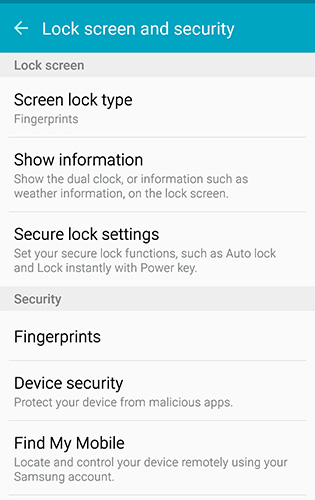7 Android Security Hacks You Need to Do Right Now
 It has happened before, and you don’t want it to happen again. After installing a cracked app on your Android device, it got infected with malware. Now you're starting to notice expensive charges on your mobile bill for services you didn't sign up for. Having no other option, you end up paying for something you did not incur.
It has happened before, and you don’t want it to happen again. After installing a cracked app on your Android device, it got infected with malware. Now you're starting to notice expensive charges on your mobile bill for services you didn't sign up for. Having no other option, you end up paying for something you did not incur.
Ask any dedicated Android user and they can come up with a laundry list of why it’s one of best of many mobile operating systems out there. As many users know, Android devices can be relatively cheap, and this might be the primary reason why some users choose it. However, apart from its economic advantage, Android is also known for its fast and efficient data storage, its capacity to house innovative app development without licensing fees for mobile developers and manufacturers, diverse hardware platforms, and its simple, yet powerful Software Development Kit (SDK). Additionally, Android is widely available across different form factors, brands, and price points. With all these nifty features and advantages, users enjoy a wide variety of options and features compared to other platforms.
As with other technologies and platforms, unfortunately, you can expect to run into a few problems from time to time. Whether they’re the usual suspects such as bugs and vulnerabilities to more serious security issues like malware and mobile attacks—and even device theft—your device and the data in it can be stolen, spied on, and used by cybercriminals if you aren’t careful.
[READ: Dude, Where’s My Phone? How to Deal With a Lost or Stolen Mobile Device]
Encountering such threats could pose many other security and privacy risks besides hefty phone bills. You may not know it, but cybercriminals are also out to get your personal information. But because the mobile landscape is ever-changing, securing your mobile device can be tedious. Hence, many users tend to rely on default security settings. While this helps, it’s still better to go the extra mile to make sure you’ve got your bases covered when disaster strikes. How can you secure your Android device? Here are simple security tweaks you can do to make sure that your device and the data in it is protected:
 Lock the screen – Enabling a screen unlock code will prevent an outsider—or a device thief—from accessing your mobile data, even if your phone gets stolen.
Lock the screen – Enabling a screen unlock code will prevent an outsider—or a device thief—from accessing your mobile data, even if your phone gets stolen.- Protect your data – Android virtually comes with pre-installed security measures that can be easily accessed and enabled from the security submenu. The Android security screen also includes an option to encrypt the device. Enabling this option will help protect sensitive information (like corporate data) stored in the device.
- Strengthen passwords and app permissions – Google does a fine job at synching their updates with Android devices. However, some manufacturers take a little more time to update. Remember to check the features that you allow the app to access, and don’t forget to use strong and unique passwords. Note that passwords can be cracked, and if you re-use your passwords, hackers can effortlessly guess the passwords on your other accounts.
- Security apps – it’s always a good idea to make use of security apps. An app that offers anti-theft features like remote wipe-out, tracking, and locking, as well as malware scanning and detection can help mitigate potential threats. [See how Mobile Security for Android Smartphones and Tablets can help you protect your device and improve device performance]
- Connect to secure networks - when you’re in a rush, or when there seems to be no other alternative network, it seems practical to connect to public Wi-Fi. But before you do, think twice. Unsecured Wi-Fi networks can be used to stage man-in-the-middle attacks where data can be intercepted by a third party.
- Avoid rooting or your device – Before rooting your Android device, consider the pros and cons first. While it allows you more control over your device, it could also allow unsigned apps, including malicious ones, access to your data. This also makes it difficult to patch and update your OS and apps, which could leave your device vulnerable.
- Download from official app stores – Downloading from third-party app stores is one of the easiest ways for any mobile device to get infected with malware. Limiting your apps to those from official app stores (like the Google Play app store) can lower the risks.
Like it? Add this infographic to your site:
1. Click on the box below. 2. Press Ctrl+A to select all. 3. Press Ctrl+C to copy. 4. Paste the code into your page (Ctrl+V).
Image will appear the same size as you see above.
 Cellular IoT Vulnerabilities: Another Door to Cellular Networks
Cellular IoT Vulnerabilities: Another Door to Cellular Networks AI in the Crosshairs: Understanding and Detecting Attacks on AWS AI Services with Trend Vision One™
AI in the Crosshairs: Understanding and Detecting Attacks on AWS AI Services with Trend Vision One™ Trend 2025 Cyber Risk Report
Trend 2025 Cyber Risk Report CES 2025: A Comprehensive Look at AI Digital Assistants and Their Security Risks
CES 2025: A Comprehensive Look at AI Digital Assistants and Their Security Risks